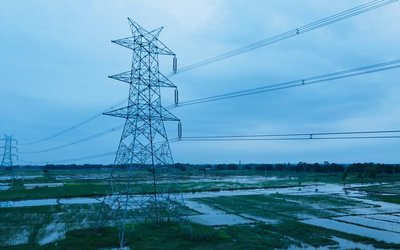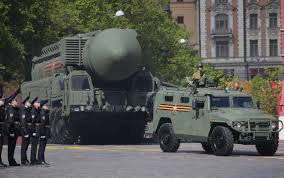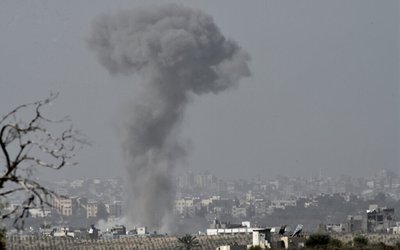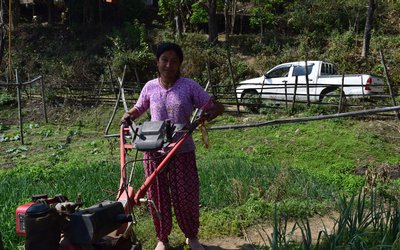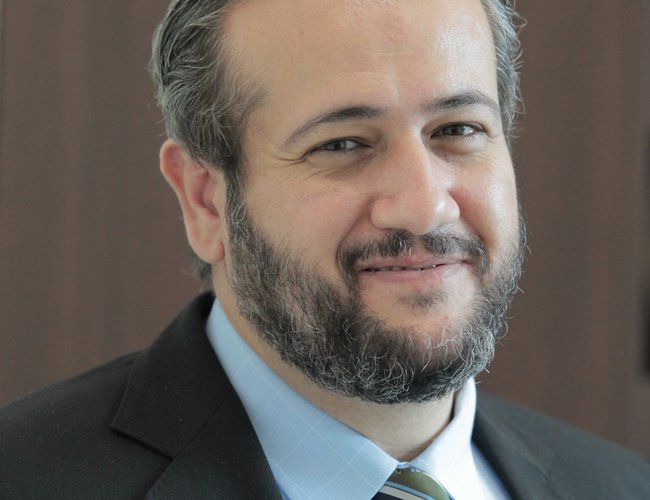
As country manager of the World Bank, Nepal’s major multilateral development partner, what is your impression about the ongoing development policies and priority of Nepal?
I’m honored to be in Nepal in this time in its history. In so many ways, we are now in a new Nepal. After decades of political transition following the Comprehensive Peace Agreement, and the devastating setbacks of the 2015 Earthquake and 2017 floods, we are now back on the path towards our goal of a Prosperous Nepal, and Happy Nepalis. A stable Government with a majority in Parliament is able, for the first time in decades, to unveil a long-term development vision for the country. This coincides with Nepal’s historic transition to a federal democratic republic where the potential, needs and aspirations of the Nepali people need to also be decentralized.
Recent growth has been strong (averaging above 6 percent over the past years) and driven by investment (in contrast to the growth of the past which was just based on consumption fueled by remittances); inflation is low due to good agriculture performance. Overall, the country has also made remarkable strides in reducing poverty from 46 percent in 1996 to 15 percent in 2011, and consumption growth of the bottom 40 percent was 7.5 percent compared to 4 percent on average across all households and is projected to be 10 percent in 2019.
Now, moving forward, we need to address some critical challenges in order to accelerate growth and poverty reduction. We also want Nepal to reach Middle Income Country Status by 2030. For that, the first need is to ensure a successful transition to federalism so that people in all corners of Nepal have access to critical basic services, jobs, opportunities and growth. In that regard, local Government will need all the support we can all give to help them strengthen their planning, budgeting and overall public financial management systems in order not to disrupt service delivery that would support growth and shared prosperity.
We also need to work in parallel to raise investment and engage the private sector more actively. Nepal will need about 10-15 percent of GDP annually for the next 10 years in order to close the infrastructure and skills gaps - over four times the current levels. These would require reforms to strengthen the investment climate and reduce the costs of doing business so that the private sector and foreign investors can help finance these needs.
Building a nation is an expensive proposition. It requires considerable resources, and the vision and human resources to put those resources to good use. These funds will need to come from increased engagement of the private sector (through the related reforms that ease their ability to invest and generate employment); increased public resources through improved revenues, particularly for the provinces and local governments. It will be critical to raise the ability of local governments to generate revenue as well as their capacity to implement their projects and programs. Improvements in tax policy and increased expenditure efficiencies will be crucial, and a very technocratic Minister of Finance is making very good strides in this regard. Finally, the government and development partners can continue to strengthen their partnerships to provide additional financing where it is needed but not viable for the private sector to contribute.
So, it’s about having a clear vision and development narrative….or what I call a development storyline. Then you need the policies, followed by the regulations. And then comes the Monday morning after, where there is clear and coordinated action on the ground to make it happen. Coordination and daily implementation is what will make the difference.
As the new government has been stressing the need to start new infrastructure projects, how the World Bank can support Nepal?
This year, the World Bank celebrates its 50-year anniversary in terms of our engagement in Nepal. The first World Bank loan was in 1969, for the telecoms sector. We now have a very large engagement, spanning 25 projects worth almost $3 billion dollars, and across various sectors. This includes economic policy, reconstruction, education, health, agriculture, poverty alleviation, social protection and jobs, and many more. In the infrastructure sector, we have considerable projects in energy, roads and bridges, water, urban development and others.
Infrastructure is a critical lifeline for Nepal’s development, and it will be important to continue supporting it. So, our strategy and programs will continue to focus on this, as it will help in improving communications and trade, quality of services and the ability of local and foreign investors to do their work.
In order to achieve Middle Income Country status, Nepal will need sustained growth rates of at least 7-8 percent or higher. Infrastructure will need to be upgraded to allow for this growth. However, infrastructure investment will need to be around 12 percent of GDP or more per year, roughly four times the current levels. Naturally, public resources will not and should not be sufficient. The private sector must be brought in to support infrastructure development, including airports, roads, hydropower, etc.
The World Bank is one of the major development partners of Nepal supporting many infrastructure projects. How do you see the performance under construction projects?
It’s no secret that the pace of infrastructure development and public investment management, although much better than before, still needs improvement. Public investment is on average around 4% of GDP, which is quite low. On average, a project takes about 11 years to complete, and budget execution is usually below planned levels.
The authorities are aware of this long-standing issue in Nepal, and one that has prevailed for years. We are in discussions with the authorities and our development partners to engage more in this sector of infrastructure. First, it is important to get the policies right, including in clarifying the role of local governments in the projects and, more importantly, working with them as early as possible so that they can build the capacity to execute these projects. So, the top priority now is to make sure we federalize our development programs, allowing local governments and private sector to be part of the construction, maintenance and provision of infrastructure. This is a key priority.
Other important priorities include: (a) focusing on timely completion of existing projects, which also requires clear procurement and contracting practices that ensure that contractors are accountable to deliver; (b) ensuring that technical ministries are accountable in turn to make these contractors accountable; and (c) making sure that operations and maintenance is taken seriously as part of the project.
From the side of the World Bank, we do not execute infrastructure projects. Rather, we support development of a sector strategy, and then finance these projects that must adhere to international good practices of procurement and financial management, and that also pay strong attention to environmental and social safeguards. For World Bank-financed projects, our approach is to support Nepal’s development through projects that achieve results. So, if a project is delayed then the results for the Nepali people are not being achieved. In that regard, we always commit to find every possible way to move them forward. If, after all that, delays continue then we will not hesitate to work with our counterparts to suspend them.
Energy is the priority sector of the present government and the World Bank has also provided support to solar energy. How do you see the possibility of future support in hydropower development in Nepal?
The potential of hydropower is enormous and can contribute up to 45,000 MW. Currently, only about 2% of the country’s hydropower potential is being exploited. For a country with such capacity, it is inconceivable that it should have to import electricity. Indeed, it should be a net exporter to neighboring countries who are also trying to diversify their sources of electricity. There are a number of very promising pipeline projects underway in Nepal, and the World Bank is in discussions with the Ministry and Nepal Electricity Authority (NEA) on a potentially large hydropower project. Our engagement, and those of other Development Partners, should be part of a broader mix of hydropower projects that also include large-scale private investment. This will be critical for Nepal to grow its hydropower sector by around 50 times. For that to happen, it will be very important to have clear and simple processes for getting forestry clearances while ensuring environmental sustainability, and to adopt consistent practices for safeguarding environmental and social concerns. This will facilitate these projects and encourage the private sector to come in. Private investors also need to hedge their foreign exchange risks, as they will likely borrow a large part of their funds in US dollar or other widely-used currencies. For that, Nepal will need to develop a legal framework to allow investors to hedge their risks of foreign exchange fluctuations.
As the government has already announced it, how do you see the World Bank ready to support Upper Arun?
We have a solid engagement in the energy sector, and work very closely with the Ministry of Energy, Water Resources and Irrigation as well as the NEA. We have a considerable investment in energy generation and transmission and have recently approved an additional amount of almost USD 8 million to help Nepal diversify its energy sources by increasing the capacity of renewable energy mini-grids. We are also in an early stage of discussions for a larger engagement in hydropower, but need to ensure that all the technical, environmental and social studies and safeguards are in place and are conducive to World Bank involvement.
Time extension and cost escalation are major problems being faced by infrastructures projects. Are the projects funded by the World Bank any different?
World Bank-financed projects are implemented by local institutions, but according to international good practices of procurement, financial management, and social/environmental safeguards. In other words, they use an international standard of contracting that addresses these issues. This is often why our clients, including Nepal, seek World Bank support on these projects- in order to transfer the good practices in the use of these types of contracts. In addition, World Bank-financed projects involve a great deal of early technical work to ensure that a contract reflects all the costs. So, in that sense, good early homework helps ensure that the right contractors are selected, and based on realistic bids. It is promising that the Government is revisiting the Public Procurement framework and regulations, as it will be important that contractors are held accountable for performance for the significant delays in projects throughout the country.
The government has been repeatedly calling foreign investors to invest in the country. How favorable is the investment policy of Nepal?
Nepal’s quest to reach Middle Income Country status by 2030 will require GDP growth rates of at least 7-8 percent or higher every year. High levels of investment will be required to achieve these levels of growth. For example, infrastructure investment alone will need to be around 12 percent of GDP or more per annum, roughly four times the current levels. Naturally, public resources will not be sufficient. This is why the authorities are rightly placing emphasis on attracting investors.
Nepal’s new stable Government is just beginning its journey of development. The government will need to take advantage of all of its resources, including its human resources, unparalleled tourism potential, and strategic location amid rapidly growing and mature economic partners. To do this, the country must become a predictable ecosystem for private investment. Crowding in private resources will require: (1) sound policies and regulations to govern investments and supporting Government institutions; (2) an adequate labor market, infrastructure and facilities; and (3) an established reputation among current investors that Nepal is open for business, that their capital is protected and moveable, and that there is someone to resolve problems they face.
The Government of Nepal has signaled its commitment to this path through a package of laws that address Foreign Investment and Technology Transfers, Public-Private Partnerships, FX hedging, sustainable land use, climate smart investments, credit information reporting, and others.
These important steps are recent and have not yet had a chance to play out in terms of the investment climate. In other words, the positive changes have not yet taken hold. And this is exactly the right time to invest. The trick to sound investment is ‘going in’ at the right time, when market potential is high and early profits can be achieved. It would seem that Nepal is at this twilight where intrepid and smart investors can come in early and reap the benefits.
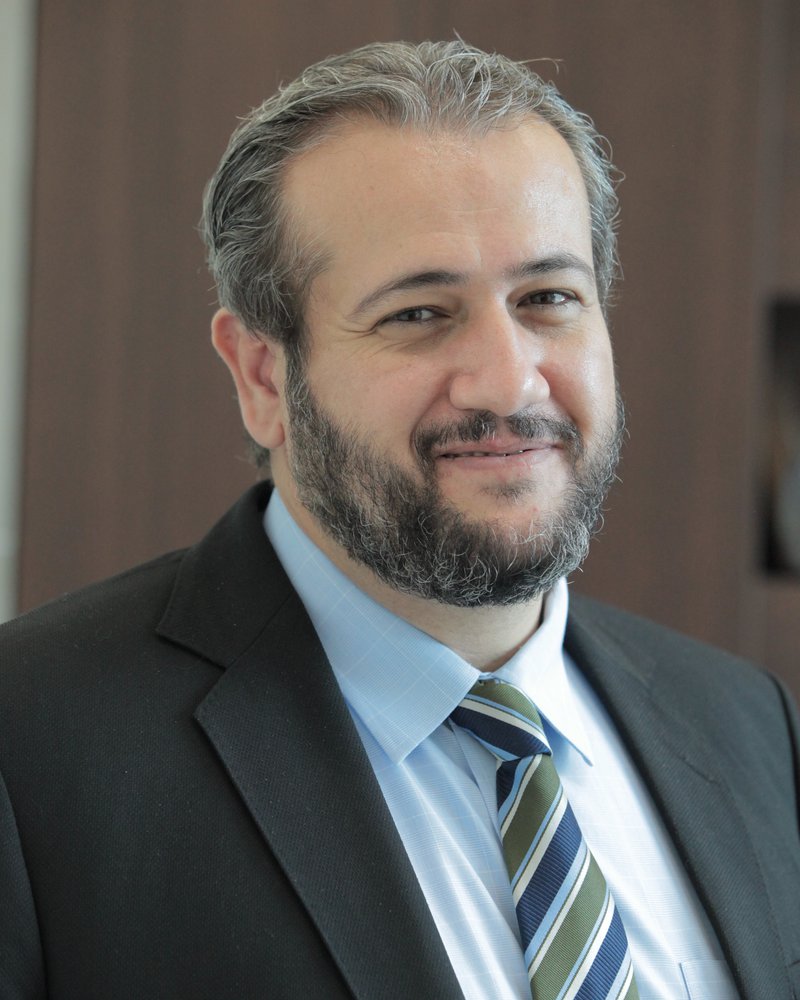
(Faris Hadad-Zervosm, the country manager of the World Bank, Nepal Office )
How important hosting the Investment Forum to lure foreign investors in Nepal?
This Investment Summit is a very important milestone in this new journey I mentioned above, but it should be viewed as one important step in a longer string of reforms and events. The first such Summit by the new Government, its value proposition is to bring together policymakers, existing investors/private sector players and Development Partners, to identify investment opportunities and discuss steps to realize them. The objectives are to:
- Express at the highest levels of Government, Nepal’s commitment to become a competitive investment destination as part of its broader vision of Maximizing Finance for Development through which public policies, public resources and private investment are brought together.
- Unveil Government’s new legal and regulatory framework to enhance the ecosystem for investors, and present potential investments and transactions that provide a frontier opportunity for investors to benefit from Nepal’s new trajectory.
- Allow Government policymakers to interact with existing and prospective investors across sectors to understand their needs, and key bottlenecks that need to be addressed to increase FDI.
- Initiate a tripartite process between Government-Private Sector-Development Partners whereby key bottlenecks are identified, and a timeline for resolution is monitored. This will ensure that Government policies, private sector initiatives, and development partner programs are aligned.
At the end of the day, this Summit’s success will only be determined a year or two from now, when we see the direction of foreign investment in the country. It is an important event, but its success will be a function of how the policies being adopted by the bureaucracy on a daily basis.
With elections of local level and provincial governments, Nepal enters into federal form of government. How do you see the early performance?
No country was built in a day, and a federalism transition is a long-term process often requiring decades. As such, it would be unwise to assess Nepal’s performance so early in this profound change. Having said that, there are some critical early actions that would determine future success and mitigate risks. First is the need for a clear vision and storyline on how federalism will be implemented, with parallel steps to devolve and address functions, funds and functionaries. Second is the need to focus early on building capacities of local governments to deliver services, and to implement public investment projects. Third is to ensure early coordination within Government institutions, and also with the private sector, to identify strategies to decentralize economic development so that jobs are created throughout the country.
So, while it is much too early to assess whether the transition to federalism was successful, it is certainly not too early to begin addressing the recipes for future success, or to avoid risks.
Despite allocation of budget to province and local level, the capital expenditure of the last six months is still around 20 percent. How do you look at it?
At this early stage in Nepal’s federalism transition, it is very natural to experience bottlenecks in spending linked to delays in the provision of services and implementation of public investment programs. After all, local institutions are quite nascent, and the devolved systems are not in place. So, the low disbursement rates are by no means unexpected at this early stage.
Nevertheless, citizens still need a continuum of public services and access to opportunities without delay. Therefore, it becomes even more urgent to organize and coordinate the federalism transition with a clear plan addressing the clear devolution of functions, functionaries and funding. In the case of capital spending, a clear breakdown of national versus local projects will important. From our side, the Development Partners will also need to focus on coordinating among ourselves to ensure that we ‘federalize’ our programs in coordination with local Governments and supported by the central authorities.
As I noted earlier, a country’s federalism transition is a long and profound change. While it cannot be assessed or completed within a year, two, or more, there is a critical need to take early steps to ensure that citizens have continued access to services and opportunities.
With the flow of remittances declining, how do you see Nepal’s Balance of Payments in future?
According to the Nepal Rastra Bank (NRB), remittances increased in the first six months of FY2018-19 as against a decrease of 0.5 percent (year-over-year) in the corresponding period of FY2017-18. Despite this recent increase, we expect remittances as a share of GDP to remain constant over the medium term as investments and related reforms begin to play a larger role in growth. So, GDP growth means remittances share of GDP will remain more or less at the same level.
In terms of what it means for the balance of payments, this will depend on the trade deficit and to what extent import growth slows and exports grow. The World Bank projects that reconstruction and establishment of local government offices will be a key (and healthy) driver of import growth. This is expected to peak this year before gradually moderating, while investment climate reforms to expand production and exports come into effect over the medium terms. Therefore, the BOP is expected to moderate in the medium term.
- Bangladesh Embassy in Kathmandu Organizes Daylong Art Camp
- May 07, 2024
- Weather Forecast: Light Rain With Gusty Wind Is Likely In Kathmandu And Koshi Province
- May 07, 2024
- Japan’s Foreign Minister Ms. KAMIKAWA Concluded Her First Successful Nepal Visit
- May 06, 2024
- Weather Forecast: Partly To Generally Cloudy All Over Nepal With Light To Moderate Rain Is Likely In Bagmati Province
- May 06, 2024
- Nepal Stands At A Pivotal Juncture In Its Pursuit Of Economic Growth And Prosperity: Finance Secretary Marasini
- May 05, 2024







